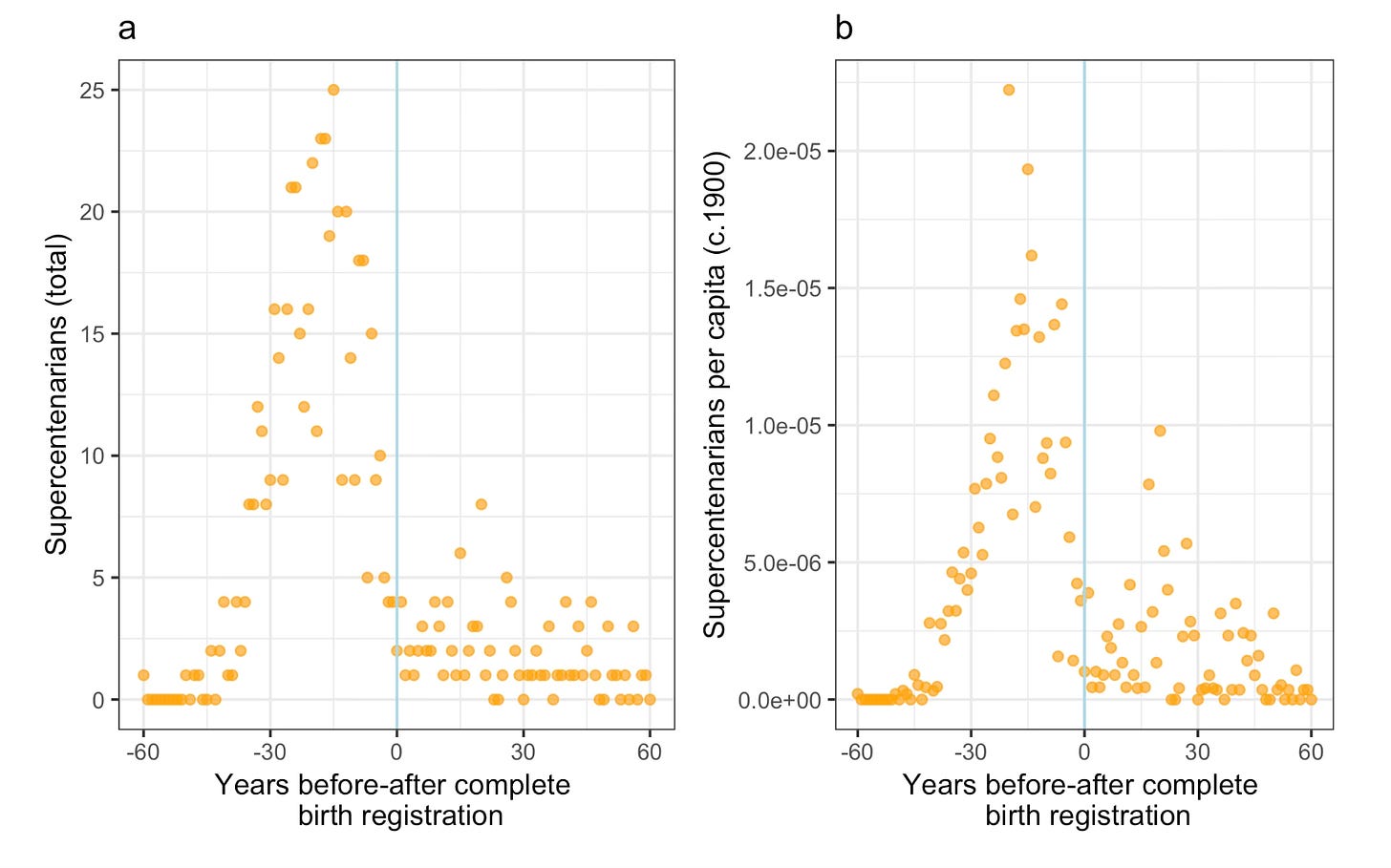The Real Secret Of Why Blue Zones Have Exceptional Longevity

Blue Zones are areas where an unusual percentage of the population live to exceptional old age.
Think 100 to 110 plus.
These Blue Zones have become incredibly popular topics and have been extensively covered in National Geographic and, more recently, in the Netflix documentary ‘Live To 100: Secrets of the Blue Zones’.

The idea of Blue Zones is such a lovely idea.
I just don’t buy it, though.
Here’s why.
Let’s start with listing the factors that are thought to underpin the commonalities of ‘Blue Zones’.
These are:
-
Staying Active
-
Drinking Red wine
-
Honouring Family
-
Finding Purpose
-
Eating Vegetables
-
Having Faith
-
Taking Time Off
-
Celebrating Life
All are entirely reasonable ingredients for a healthy life (With the exception of alcohol, maybe).
But let’s look at the list of Blue Zones:
-
Okinawa, Japan.
-
Loma Linda, California.
-
Sardinia, Italy.
-
Ikaria, Greece.
These are the main ones, but there are others, mostly small towns in Mediterranean, Europe.
Look at the factors above, and you will find that each area tends to have them in spades.
Very true.
But so do many other small towns and villages around the world, and they don’t seem to have the same signature of longevity.
Anyone who has travelled across Europe will recognise these features in most small towns and villages dotted across the Mediterranean.
Why would the ones listed here be so different?
The reason, it seems, might have less to do with vegetables and more to do with poor record-keeping and benefits fraud.
When Blue Zones are examined more closely, the factors that seem to line up best with exceptional longevity include:
-
Poor Birth and Death Registration Processes.
-
Regional Poverty.
-
Old Age Poverty
-
Material Deprivation.
-
Low Incomes.
-
High Crime Rates.
-
Remote Region of Birth
-
Worse Health
-
And…. fewer people alive age 90 and over1.
Huh?
These don’t exactly fit the idyllic image of the ‘Blue Zone’.
Let’s dig a little deeper.
To start with the obvious, if you are a supercentenarian, i.e. over 110 years of age, you were born in the early 1900s.
Record-keeping and census data were not perfect back then, but record-keeping mechanisms were in place.
The US census between 1880 and 1900 covers over 75% of the supercentenarians in the US2. On a state-by-state basis, however, mandatory birth registration and census record keeping were rolled out over several years.
When this type of record-keeping became mandatory, the number of supercentenarians plummeted3.

Seems a little odd, right?
In France and the UK, the best predictors of an exceptionally long life?
Poverty.
Specifically, old age poverty predicts 70% of the variation in extreme life spans.

This signal of poverty as a predictor of extreme longevity shows up in various countries.
Let’s look at Scotland and Northern Ireland as an example.
Both regions have had excellent birth registration and census data for a long time.
Combined, they have a population of roughly 7 million people and only three supercentenarians are known in that region.
Towers Hamlet, a London Borough, has a population 24 times smaller and yet has 15 supercentenarians.
This doesn’t really make a lot of sense.
Additionally, Towers Hamlet has among the worst poverty rates, child poverty, income inequality and deprivation indexes in all of London4.
Maybe just statistical noise, but something is not adding up.
Let’s look at France to see if we can find similar patterns.
Outside of Paris, it seems the best places to live for exceptional longevity in France are…
Not on mainland France but in its colonies, Guadeloupe, Martinique and Corsica.
Not exactly bastions of perfect record-keeping.
Aim For A First Day of The Month Birthday.
In general, births are evenly distributed across any given month.
But not for supercentenarians.
Japanese supercentenarians are 2.77 times more likely to be born on the first day of the month.
US supercentenarians are about 1.57 times.
Strange.
So far, it seems that the best way of hitting 110 plus is to be born into extreme poverty, stay poor until over 60, live in an area with historically poor record keeping and be born on the first day of the month.
Let’s look a little closer.
Statistics are only as good as the dataset you are working from.
In Japan, a country noted for its longevity, a 2010 investigation found that 238,000 of its centenarian population was likely already dead.
Recent estimates have revised down the number of centenarians by 82%.
Italy, another hotbed of longevity, was discovered to be paying the pensions of 30,000 dead people.
In the US, it was recently found that more than 35% of all supercentenarians were in fact…
Dead.
Greece has long been famous for its healthy lifestyle and Blue Zones.
It is also renowned for notoriously bad record-keeping.
In 2011 there were 2,488 living centenarians noted on the census.
Which is strange, given that the government was paying old-age benefits to over 9000 centenarians.
This is, of course, in addition to the 200,000 pensions being paid to ‘blind taxi drivers’ and dead people.
Okinawa
The Japanese prefecture of Okinawa has long been recognised as a longevity Blue Zone.
This is interesting, given that it also follows the pattern of poverty in the UK and France, with a child poverty rate of 36%.
Unlike other nations where birth and death registrations are centrally filed, in Okinawa, births and deaths were recorded by family members and filled at a local town hall.
Over 90% of these records were destroyed as part of the wide-scale bombing of Japan during World War 2.
These documents were then recreated based on recall and were filled at centres run by the US military that largely did not speak Japanese.
But it’s not just Japan.
Of the 797 supercentenarians listed in the USA, not one has a birth certificate.
In France, none of the 241 supercentenarians have an official birth certificate.
In the UK, only 1.6% of the supercentenarians have birth certificates.
Most of these supercentenarians were born at a time and in a place where official birth certificate registration was far higher.
A similar pattern exists for death certificates.
Healthy Lifestyles?
While National Geographic and Netflix coverage paints a rosy picture of archetypical healthy lifestyle patterns, the reality is a little different.
For many Blue Zones, smoking rates of up to 50% are frequent, as are illiteracy rates of 80%.
Over 90% have below-median incomes and an average of only 7.4 years of education.
It doesn’t sound as appealing for a long life using those as the ingredients for success.
Loma Linda, California.
The Central Californian town arguably has the most merit in being designated a Blue Zone.
Loma Linda has acquired its claim to longevity because of a group of Seventh-Day Adventists who follow a predominantly plant-based diet, stay active, do not consume alcohol and rarely smoke.
But in contrast to other Blue Zones, their claim is a substantial increase in average lifespan across the population, not exceptional longevity beyond 100 years.
These factors would align more closely with contemporary observational data with adherence to similar lifestyle patterns with a resultant additional ten years of life.
But not an extra 40 like is claimed for other Blue Zones.
Blue Zones - Real or Fake?
Personally, I think fake.
For me, they don’t pass the ‘sniff test’.
The healthy lifestyle patterns all seem reasonable, but what seems unreasonable is longevity in certain regions where there is routine, subpar record keeping, and baseline health factors that are notoriously poor.
Additionally, endless small villages with similar characteristics across the planet do not share the same exceptional longevity.
But what about genetics?
Genetics certainly plays a major role when it comes to exceptional old age.
But that is not exactly helpful to most people looking to live longer.
Additionally, there seems to be an overwhelming amount of administrative flaws in the data collection in these zones that point to non-genetic reasons for the exceptionally long lifespans noted.
For me personally, living to 110 years of age is not my target, and I am very doubtful that the recipe for such an achievement will be found in these supposed ‘Blue Zones’.
My target is to live to about 90, with most of those years being high quality.
For that goal, we have reasonably good data.
But as for moving to a small town in the Mediterranean to hit your goal of living to 110?
I think you might need to work on forging your birth certificate, as that seems like the most reliable way of hitting that goal.
Supercentenarian and remarkable age records exhibit patterns indicative of clerical errors and pension fraud. Saul Justin Newman. bioRxiv 704080; doi: https://doi.org/10.1101/704080
https://www.census.gov/population/www/censusdata/PopulationofStatesandCountiesofthe UnitedStates1790-1990.pdf
Supercentenarian and remarkable age records exhibit patterns indicative of clerical errors and pension fraud. Saul Justin Newman. bioRxiv 704080; doi: https://doi.org/10.1101/704080
Ministry of Housing Communities & Local Government. English indices of deprivation 2019: research report [Internet]. 2019. Available: https://www.gov.uk/government/publications/english-indices-of-deprivation-2019- research-report



